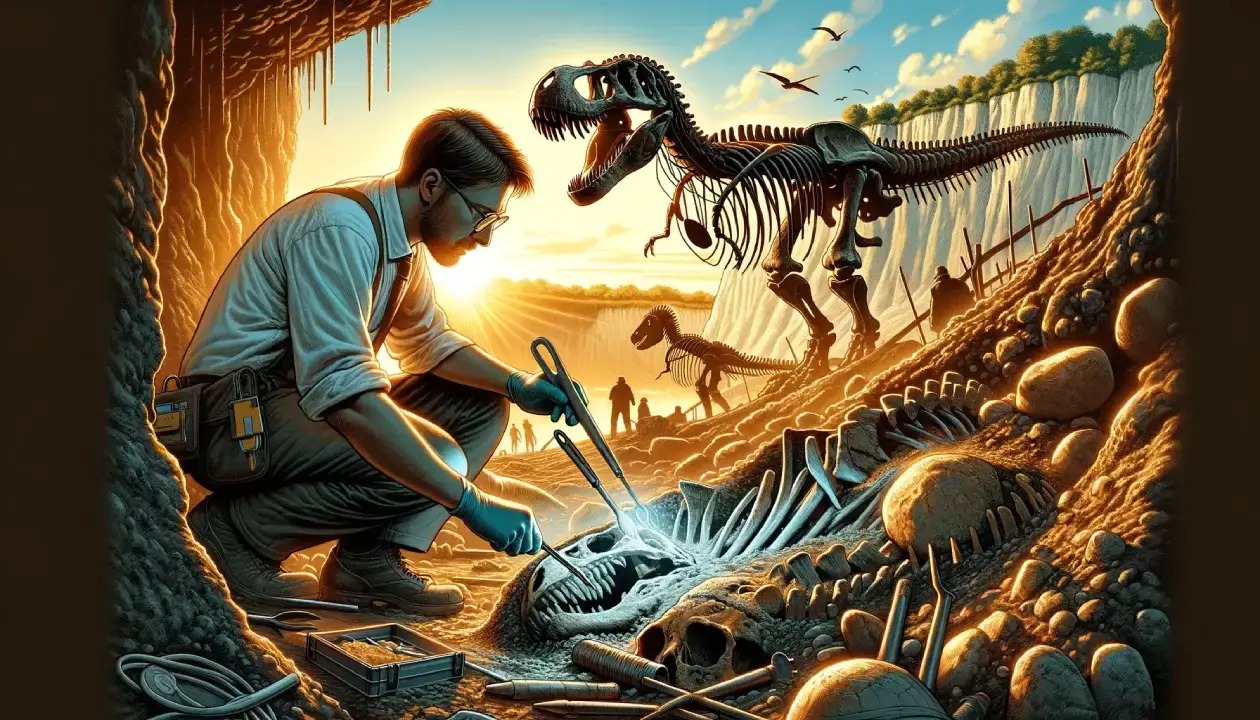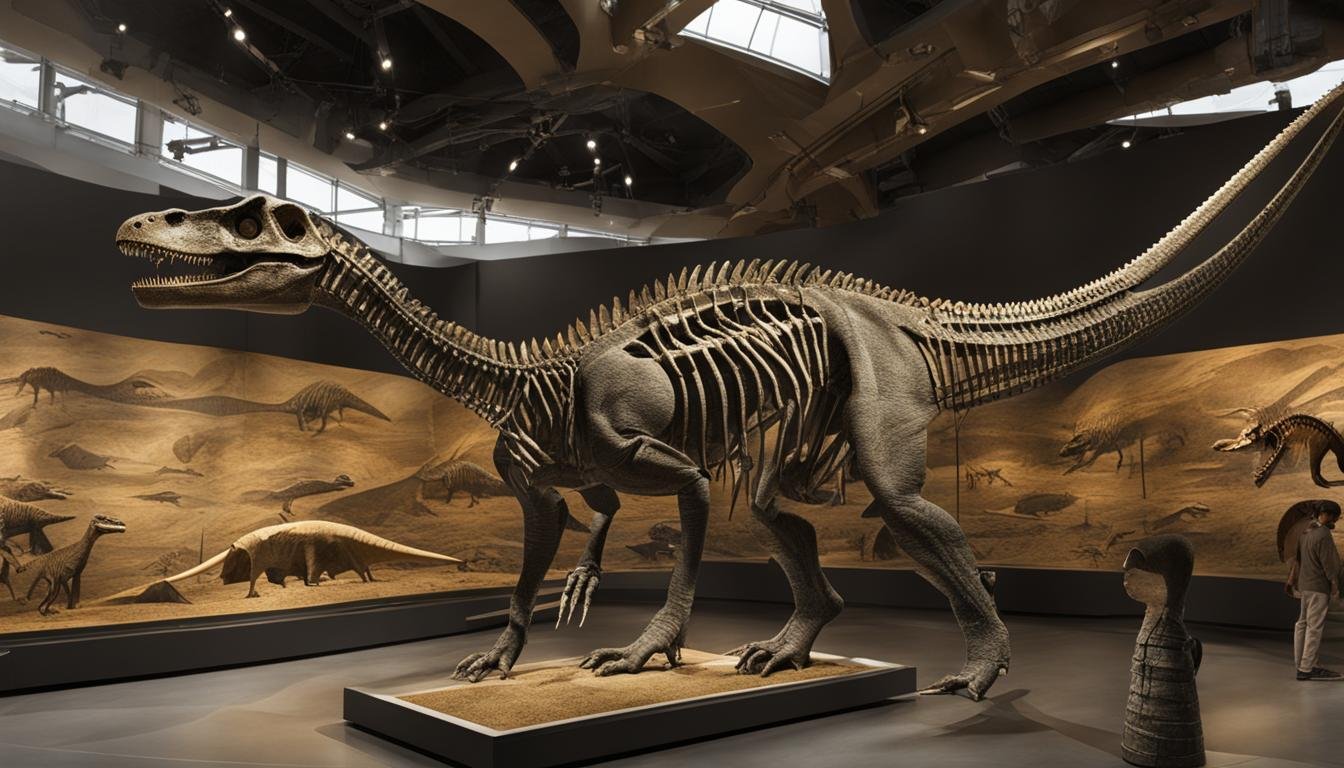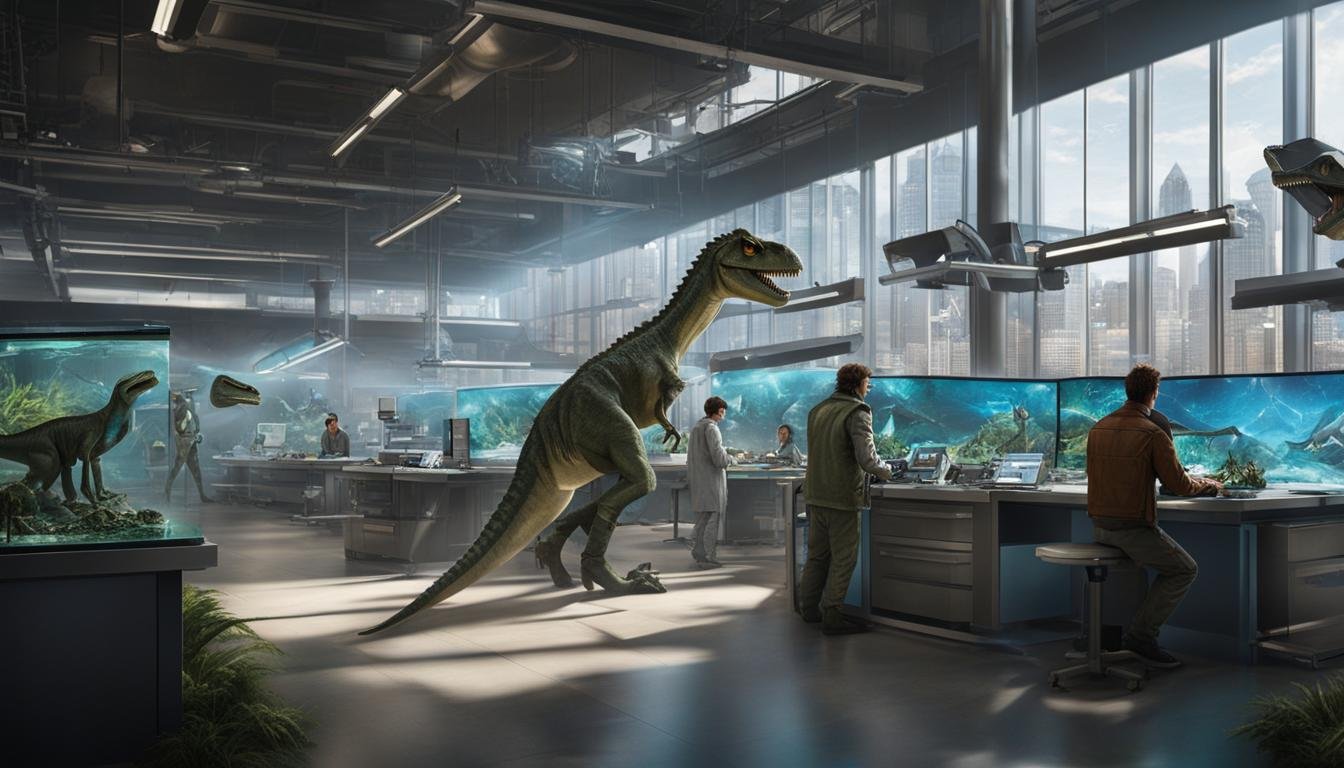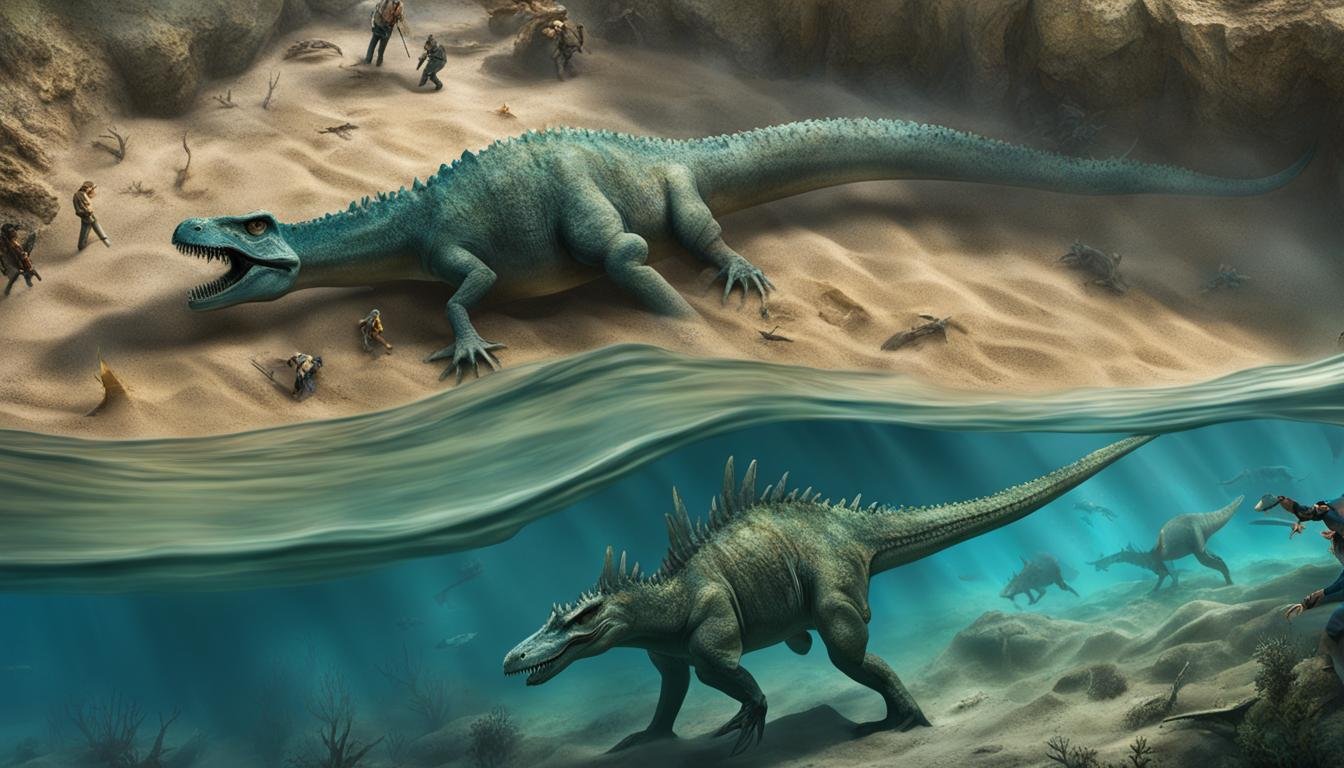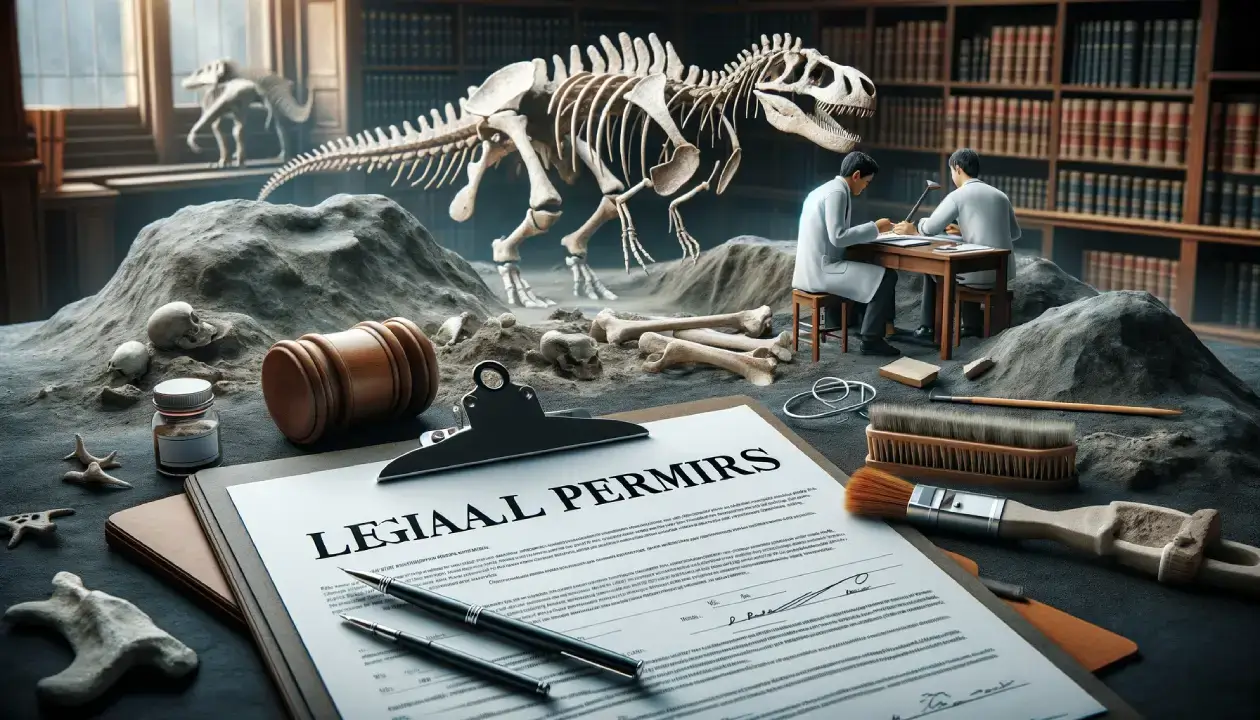Imagine stepping back millions of years, into a world where gigantic reptiles roamed the Earth! This isn’t a scene from a science fiction movie; it’s the realm of dinosaur paleontology. As you read this, somewhere out there, a paleontologist might be brushing off the dust from a fossil that’s millions of years old. These incredible creatures, which dominated our planet during the Mesozoic Era, continue to captivate us, not just in museums but in the very science that seeks to unravel their mysteries. Welcome to the fascinating world of dinosaurs and paleontology, where each fossil is a piece of the puzzle, telling us stories from an age long gone.
Key Takeaways
| Aspect | Key Point |
|---|---|
| Paleontology | Science uncovering prehistoric life, focusing on dinosaurs |
| Dinosaur Evolution | Understanding diversity through fossil records |
| Tools of Paleontology | Techniques and equipment used for fossil excavation |
| Anatomical Insights | Study of dinosaur skeletal structure and adaptations |
| Reconstructing Lifestyles | Using fossils to deduce dinosaur behaviors and environments |
| Dinosaur Legacy | Their evolutionary journey and impact on our understanding |
Unveiling the Mysteries of Dinosaurs
The Role of Dinosaur Paleontology
Paleontology, at its core, is the scientific study of ancient life. It’s like being a detective, but instead of crimes, you’re solving the secrets of prehistoric life forms. Dinosaurs, ranging from the mighty Tyrannosaurus to the soaring Pterosaurs, are just a part of this ancient tapestry that paleontologists strive to understand.
Why Dinosaur Paleontology Matters
But why focus on dinosaurs? Well, it’s not just about their size or their fearsome reputation. Dinosaur paleontology plays a crucial role in understanding the evolution and diversity of these prehistoric giants. Each dinosaur fossil discovered adds a piece to the vast jigsaw puzzle of Earth’s history. From the early Triassic period to the end of the Cretaceous, these magnificent creatures evolved in ways that still astonish scientists and enthusiasts alike.
By studying dinosaurs, we gain insights not just into their world, but also into our own. After all, the story of dinosaurs is a part of the grand narrative of life on Earth. It’s a journey that takes us back millions of years, offering glimpses into an age that we can only imagine – the Age of Dinosaurs.
Unearthing Dinosaur Fossils: The Tools of Paleontology
Overview of Paleontological Tools
The quest to unearth dinosaur fossils is equipped with a suite of specialized tools that make Indiana Jones look rather underprepared! Here’s a snapshot:
- Rock hammers and chisels: For the initial exposure of bone from rock.
- Brushes and dental picks: For delicate removal of sediment.
- Plaster and burlap: To create supportive jackets for transportation.
- GPS devices: For precise location mapping of dig sites.
Each tool plays its part in a delicate dance between preservation and discovery. You can dive deeper into the arsenal of a paleontologist at our detailed page on tools and techniques for fossil excavation.
The Fossil Excavation Process
The excavation of a dinosaur fossil is a meticulous process that can take weeks, months, or even years. It starts with surveying and mapping potential sites often identified from aerial surveys or by walking the terrain, looking for exposed fossils on the surface. Geological maps are consulted to pinpoint the right strata dating back to the Mesozoic era.
Once a site is chosen, paleontologists carefully remove the overlaying sediment layer by layer, often working under harsh conditions. The surrounding matrix, the rock encasing the fossil, is meticulously chipped away to reveal the fossil beneath. If the find is significant, a plaster jacket is crafted around the specimen for protection.
The Art of Preservation
Upon extraction, the real work begins. Fossils, now vulnerable, require stabilization and conservation. This can include applying consolidants to strengthen the bones or using intricate tools to remove the last bits of rock. The goal is to prepare the fossil for study without damaging it.
The preservation of fossils isn’t just about keeping a specimen intact; it’s about protecting the data it holds. Each fossil is a biological record that, if lost, can never be replaced. It’s why meticulous care in the field translates to invaluable insights in the lab.
Understanding the process behind fossil discoveries adds depth to our appreciation of these relics. For a closer look at how fossils are formed and unearthed, explore our comprehensive guide on understanding fossil formation.
Decoding the Past: Anatomical and Physiological Insights from Dinosaurs
Dinosaur Anatomy Unearthed
Dinosaurs were an incredibly varied group, with anatomical features as diverse as their sizes and habitats. Their skeletons, the most commonly fossilized parts, reveal a lot:
- Skeletal structure: Ranging from the bipedal theropods to the quadrupedal sauropods, dinosaurs had a variety of skeletal adaptations. The massive femur (thigh bone) of a Tyrannosaurus rex, for example, could reach up to 1.8 meters (5.9 feet) in length.
- Musculature: While muscles don’t usually fossilize, paleontologists infer muscle structure from the attachment sites on bones. The robust arm muscles of predators like Velociraptor indicate a powerful grasp, vital for hunting.
- Other adaptations: Dinosaurs exhibited numerous adaptations, like the long necks of sauropods for reaching high vegetation or the armored plates of stegosaurs for defense.
To get a detailed analysis of these prehistoric giants’ bone structure, check out our exclusive content on dinosaur bone structure analysis.
Physiology of the Prehistoric Titans
Moving beyond bones, let’s talk physiology:
- Respiratory systems: Some dinosaurs had air sacs similar to modern birds, suggesting they might have had a highly efficient respiratory system.
- Digestive systems: Herbivorous dinosaurs like Triceratops had complex digestive systems to process tough plant material, possibly including fermentation chambers.
- Locomotion: From the sprinting legs of T. rex to the swimming flippers of plesiosaurs, locomotion in dinosaurs was adapted to their environment and lifestyle.
The physiological intricacies give us clues about how dinosaurs lived and thrived. Their breathing mechanisms, for instance, might explain how some could grow so large and still sustain high activity levels.
Significance of Anatomical and Physiological Studies
Understanding the anatomy and physiology of dinosaurs provides invaluable insights into their behavior and adaptations. For example, the study of fossilized footprints reveals not just the gait and speed, but also social behaviors such as hunting in packs or parental care.
This anatomical and physiological knowledge helps to paint a dynamic picture of life millions of years ago and serves as a bridge connecting the prehistoric to the present. It allows us to speculate on how these beasts interacted with their environment and each other, bringing us closer to a world that once was.
For a deeper dive into the world of ancient beasts and what their remains tell us about their lives, visit our section on museums’ role in dinosaur paleontology.
The Paleontology Puzzle: Reconstructing Dinosaur Lifestyles and Environments
Fossil Clues to Ancient Behaviors
Paleontologists are like history’s detectives, piecing together clues from the fossil record to reconstruct dinosaur lifestyles. They use every scrap of evidence, from the size and shape of bones to the smallest plant spores. Here’s what these clues reveal:
- Fossil footprints can tell us about the gait, speed, and even social behavior of dinosaurs.
- Bite marks on bones give evidence of feeding behavior and predator-prey relationships.
- Fossilized eggs and nests provide insight into reproductive strategies and developmental stages.
Interpreting Fossil Footprints and Marks
Dinosaur footprints, known as trace fossils, can form trackways telling stories of migration, hunting, and herd behavior. Comparing the spacing and depth of these prints allows scientists to estimate the size and speed of the dinosaur.
Bite marks can help identify feeding sites, dietary preferences, and interactions among dinosaur species. For example, a fossil with bite marks matching the teeth of a Tyrannosaurus rex suggests it may have been a predator or scavenger in that area.
Eggs, Nests, and Dinosaur Family Life
Fossilized eggs and nests offer a unique window into the world of dinosaur parenting. The size and number of eggs in a clutch can suggest whether the species cared for their young or left them to fend for themselves. Some nests even show evidence of being used multiple times, indicating site fidelity.
Paleoecological Studies: Reconstructing Ancient Ecosystems
Paleoecological studies combine fossils with data from other disciplines like geology and botany to recreate ancient ecosystems. These studies can reveal the climate of the time, the vegetation available, and how dinosaurs might have interacted with plants and other animals in their environment.
By understanding the habitats where dinosaurs lived, we can infer behaviors such as migration patterns and survival strategies. For instance, the presence of certain plant fossils alongside herbivorous dinosaur remains could indicate seasonal feeding habits.
This intricate puzzle of life millions of years ago becomes clearer with every fossil discovery. To delve further into the clues left behind by dinosaurs, visit our section on dinosaur eggs and nesting sites.
Dinosaurs and Their Legacy: A Journey Through Time
Evolutionary Odyssey of Dinosaurs
Dinosaurs embarked on their evolutionary journey roughly 230 million years ago in the Triassic period. Their story is one of survival, adaptation, and ultimately, dominance. Here’s the evolutionary timeline:
- Triassic (250-201 million years ago): The earliest dinosaurs were small, bipedal creatures.
- Jurassic (201-145 million years ago): Dinosaurs diversified into the giants of the Jurassic, like Brachiosaurus and Stegosaurus.
- Cretaceous (145-66 million years ago): The period saw further diversification, including the fearsome T. rex and the first flowering plants.
The End of a Reign: Theories of Dinosaur Extinction
The curtain fell on the Age of Dinosaurs about 66 million years ago, at the end of the Cretaceous. The prevailing theories for their extinction include:
- Asteroid impact: Evidence suggests a massive asteroid struck the Earth, creating a global ‘nuclear winter’ effect.
- Climate change: Gradual changes in climate might have altered habitats, affecting food sources.
- Volcanic activity: Massive volcanic eruptions could have led to severe environmental changes.
Each theory has merit, and it’s possible that a combination of factors led to the mass extinction event.
The Dinosaurs’ Enduring Legacy
Despite their extinction, dinosaurs have left an indelible mark on our world. They’ve shaped our understanding of evolution, ecology, and even extinction. The field of vertebrate paleontology owes much to the study of dinosaur paleontology, offering insights into the resilience and diversity of life.
Dinosaurs also continue to inspire generations through their presence in popular culture and their starring roles in museums across the globe. The museum of natural history wouldn’t be the same without the awe-inspiring skeletons of dinosaurs greeting visitors.
Their story teaches us about the fragility of life and the incredible power of evolution. As we peel back the layers of time, dinosaurs remind us that they, like all life on Earth, were susceptible to the whims of a changing planet.
And so, our journey through the past comes full circle with dinosaur paleontology, from the rise of these magnificent beasts to their sudden demise, offering a poignant reminder of our place in Earth’s grand narrative.

